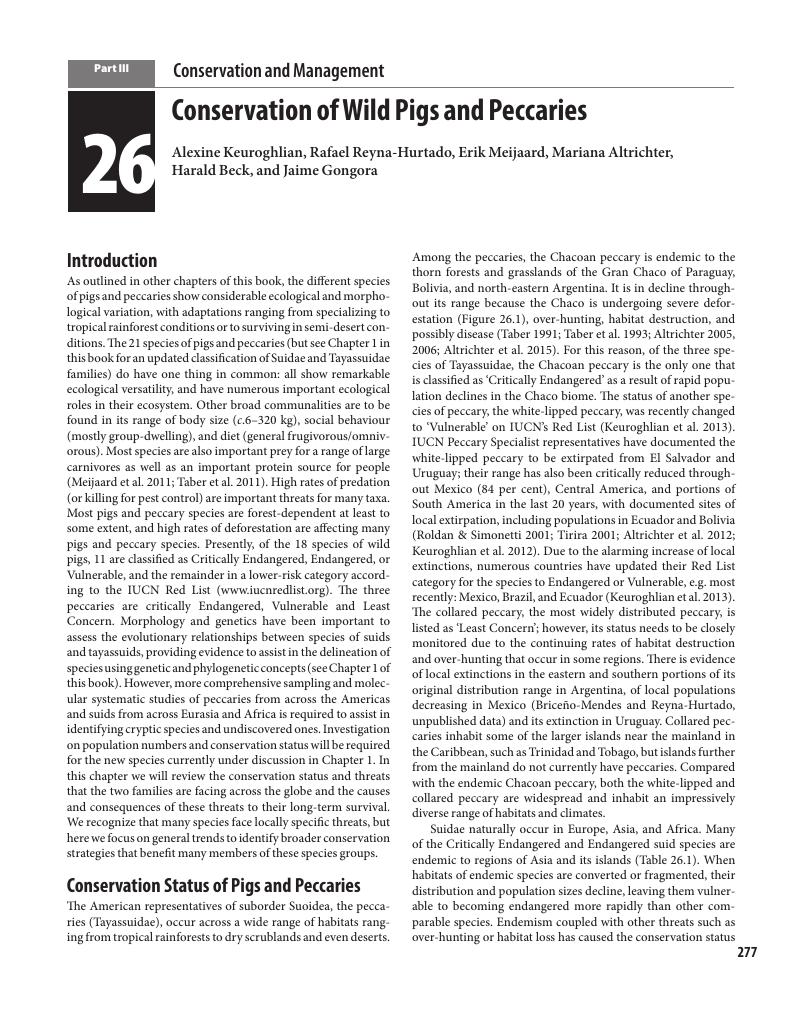Book contents
- Ecology, Conservation and Management of Wild Pigs and Peccaries
- Ecology, Conservation and Management of Wild Pigs and Peccaries
- Copyright page
- Dedication
- Contents
- Contributors
- Foreword
- Acknowledgements
- Introduction
- Part I Evolution, Taxonomy, and Domestication
- Part II Species Accounts
- Part III Conservation and Management
- Index
- References
Part III - Conservation and Management
Published online by Cambridge University Press: 21 November 2017
- Ecology, Conservation and Management of Wild Pigs and Peccaries
- Ecology, Conservation and Management of Wild Pigs and Peccaries
- Copyright page
- Dedication
- Contents
- Contributors
- Foreword
- Acknowledgements
- Introduction
- Part I Evolution, Taxonomy, and Domestication
- Part II Species Accounts
- Part III Conservation and Management
- Index
- References
Summary

- Type
- Chapter
- Information
- Ecology, Conservation and Management of Wild Pigs and Peccaries , pp. 277 - 444Publisher: Cambridge University PressPrint publication year: 2017



